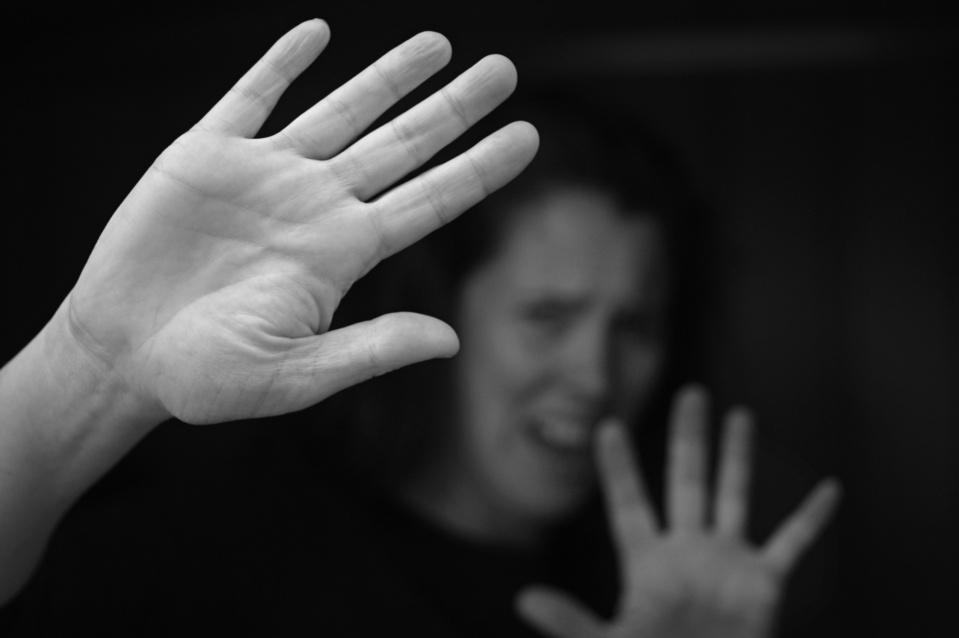
ICDA and BoardPro partnership unlocks digital governance tools for not-for-profits nationwide
Posted on 10 Dec 2025
Adele Stowe-Lindner, Executive Director, Community Directors The Institute of Community Directors…
Posted on 30 Mar 2025
By Professor Sharon Bessell

In a speech at the recent Catholic Social Services Australia conference in Sydney, Professor Sharon Bessell shared findings from her ‘More for Children’ research report on the extent of child poverty in Australia and why, as a nation, we need to do more to help disadvantaged kids.
More for Children grew out of the conviction that in a very wealthy country, we can do more to support all children.
Our aim is to better understand child poverty – from a child standpoint – in order to act.
We have built this understanding by working closely and deeply within communities, with children and their families, and through building partnerships of trust.
But families and communities cannot end child poverty in this wealthy country unless we understand both children’s experiences and the drivers of poverty. And this research has uncovered the structural nature of poverty and ways in which systems fail children and their families.
Over the past three years, we have used a rights-based, child-centred approach to collaborate with over 160 children aged between six and 16 – most between six and 12 – across four states and territories.
I should add that to protect children’s confidentiality, they choose a research nickname. Those research nicknames appear on the quotes and images I will share.
We all know the headline figure – one in six children under the age of 15 live in income poverty in Australia. In one community we have been working in, almost 40 percent of children are living in income poverty.
But numbers – while important – mask a lot. They can mask what it means for children to grow up in poverty.
And to reduce and ultimately end child poverty, we need to know what it is like from children’s perspectives. How it impacts their lives, their health, their learning, their play – and their dreams for the future.
And we need to know how to respond in ways that are child centred.
From our research with children, we have developed a child-centred definition of poverty.

"To end child poverty, children need to grow up in a context where there is money and material resources to meet basic needs, and adequate and essential infrastructure and facilities."
Poverty is the interplay between key material and non-material deprivations, limiting children’s choices and experiences now and into the future.
It means children do not have the material basics, their opportunities are limited, and crucial relationships are not in place or are under pressure.
Our research shows that poverty has three dimensions that are especially important in understanding and responding to child poverty.
To end child poverty, children need to grow up in a context where there is money and material resources to meet basic needs, and adequate and essential infrastructure and facilities.
Children need meaningful opportunities for connection and to participate. They need to be able to make choices now and into the future, and to be healthy and to be able to play, to be free from stress, and to learn. All of these are compromised by poverty.
And – importantly – we need to ensure the ways in which social and economic structures and systems can foster strong and supportive relationships or damage them.

But what does each dimension look like for children when they are growing up in poverty?
I want to share just a little of what we have heard from children.
Children talk about not having the basics – not having enough food and being hungry, not having an adequate home to live in – or having no home at all. We have worked with children living in cars, tents, and caravans.
We have heard how difficult it can be to live in emergency accommodation. Children talk about the cost of living – which they understand deeply, because they experience the impacts daily.
Children talk about the things they cannot do – because of a lack of money, but also because of exclusion, discrimination and disconnection. And because of the stress that characterises their lives.

"It feels like pain is in the air, and devastation is everywhere." Max, age 12, describes what it's like to live in poverty.
In a message to adults who make decisions, a young girl described the hope that is lost when children don’t have opportunities. A 10-year-old boy described his fears for the future – he worries that he won’t have a job, or he will only find a job that is very low paying and insecure. He worries that he will be homeless. He worries that his adult life will be as tough as his childhood.
Children also described the ways poverty puts pressure on relationships – because poverty creates stress and tension. Parents also spoke about these pressures. Strong, caring, loving relationships can act as a buffer to protect children – but poverty eats away at those relationships. And we have systems in place that exacerbate that pressure.
Not each of the dimensions in and of themselves necessarily indicate poverty, except perhaps the material dimension, which is closely associated with income poverty – but when they overlap, we see multidimensional poverty, and often very deep poverty.
What does multidimensional poverty feel like for a child? It feels like pain is in the air, and devastation is everywhere. These eloquent and powerful words are not mine – they are from 12-year-old Max.
So, what changes do we need? There are many, but in the time remaining I want to map out four.
I want to say something about each of these.
First to child inclusiveness. There is an important distinction between child-inclusive and child-centred policies – and both are important.

Child-centred policies place children as the primary focus, while child-inclusive policies place children as a primary focus, among other groups and priorities, but children are identified as key stakeholders in policy processes and outcomes.
Not all policy can – or should – be child centred, but all should be child inclusive. Few are.
Just to briefly touch on some practical examples.
There is a recognition of the urgent need to build affordable housing – but we also need to pay attention to the type of housing we build.
If we build low quality housing, with no spaces for children to play, no footpaths for them to move safely around their communities, with no places for communities to come together, and with no services, we will provide roofs over children’s heads, but we will entrench experiences of poverty for generations to come.
How different might housing developments look if they were truly child-inclusive?
To push the agenda even further: what might government benefits for families look like if we were child-centred? And we should be if we are aiming to support families.
An obsession with contribution through the workplace and paid employment, control and compliance would give way to care, and recognition of the value of unpaid care, to empathy, and adequate levels of benefits.
Children in middle childhood – the six to 12 or 13 age group– are missing out in terms of both policies and services.
There is an intense focus on early childhood – and for very good reasons. The evidence about the importance of investing in and supporting children through the first 2000 days is unarguable. The Early Strategy is an incredibly important development in our national policy landscape, as is the appointment of a Minister for Early Childhood at federal level.
We see reignition of policy interest as young people move towards the end of school and begin the transition into paid employment. And importantly, we’ve seen a range of important initiatives to ensure the views and experiences of young people over the age of 12 are heard and (hopefully) incorporated into policy.
There is also a Minister for Youth and an Office for Youth which aims to contribute to Australia's economic prosperity and social wellbeing by directly and formally engaging with young people. The age group that is the focus is 12–25 years. In the middle, we have a gaping hole.
Of course, we see a strong policy focus on school – but while school is critical to children’s lives, experiences now, and future possibilities, it is not the entirety of their lives. Moreover, schools are over-stretched and cannot cope with the multitude of seemingly endless issues and challenges cast to them to resolve.
Essentially, we have a massive policy cliff around middle childhood. This can – and must – be changed. And change is especially important for children’s whose families are struggling, children who are growing up in poverty.
The third step that is needed to reduce – and ultimately end – child poverty is a shift in narratives. We need to move away from blaming and shaming individuals and stigmatising some groups and places.
Instead, we need to recognise the structural nature of poverty, and the ways in which systems are failing.
We are seeing important new narratives emerging. This matters because no child chooses or deserves poverty – but we have had in place policies for the past three decades that seem to suggest that some children deserve no more.

Finally, we need to focus on unequal and unjust structures and systems.
This can include changes in our tax and transfer systems, changes in government benefits, and more child-inclusive and child-centred policies. But to some extent all of this is patching. Important patching – but patching nonetheless.
We also need to think big – and transfomatively.
We have dominant systems that prioritise growth over all else – and are consumptogenic. That is, they are based on ever-increasing consumption and build in obsolescence of essential goods.
As a result, the most vulnerable households gather debt and the role of the state has been diminished. Regulatory frameworks are often criticised as preventing greater wealth creation for the minority.
And in the 21st century, we have seen the financialisation of all that has value.
Provision of care has become not a commonly shared commitment and a public good, but a source of profit.
Alongside this, we have narratives of individual responsibility and individualisation, whereby individuals are both isolated and held accountable for making their own decisions, for making their own lives. Those who cannot make good lives are too often abandoned.
Our research – and the MOR for Children framework – uncovers the shortcomings in local, state and national policies, often driven by these ideas that have come to dominate our thinking.

It also uncovers the damaging nature of dominant global systems, and the values and interests on which they are built. And while we must take short- and medium-term measures to address child poverty, we can’t ignore the macro context.
We can and we must reimagine systems whereby growth models prioritise human and planetary health and are designed to serve child-inclusive rather than consumptogenic systems.
Rather than increasing household consumption as a driver of growth, our aim needs to become the building of strong social connections where low-income households are supported.
The state must have a role in regulation – not to support value extraction by the few, but to support value creation by and for the many, and to deliver essential services and lead narratives that focus on the public good, rather than abandoning individuals to that lonely task of scripting and being held fully responsible for their lives in isolation.
This task seems harder now than it was before January this year, but we can’t step back.
So, in describing the MOR Framework as transformative, our hope is that it helps us to understand child poverty from a child standpoint. But also helps understand structures that create it – and to understand where we need to patch urgently, where we need policy and systems reform, and where we need transformation.

Thank you for the chance to share our research – and what children have told us.
And I’ll leave you with a message from Mr Hippo, who is 10 years old: “Show kids respect.”
We can do that by ending child poverty.
Sharon Bessell is a professor at the Crawford School of Public Policy at the Australian National University. She is the director of the Children’s Policy Centre and internationally recognised as a leader in rights-based research methodologies and ethics. The 'More for Children' report was co-written with Cadhla O'Sullivan.

Posted on 10 Dec 2025
Adele Stowe-Lindner, Executive Director, Community Directors The Institute of Community Directors…

Posted on 10 Dec 2025
The Australia Institute has called on the federal government to force Australian businesses to be…

Posted on 10 Dec 2025
Economic empowerment is essential to enabling recovery, restoring agency and preventing future…
Posted on 10 Dec 2025
A long-time advocate for rough sleepers in northern New South Wales has been named her state’s…

Posted on 10 Dec 2025
What a year 2025 has been, particularly at a national level where the Parliament and politics as we…

Posted on 10 Dec 2025
Anyone working in an organisation knows it: meetings follow one after another at a frantic pace. On…

Posted on 10 Dec 2025
As a qualified yoga instructor who learned the practice in her hometown of Mumbai, Ruhee Meghani…

Posted on 10 Dec 2025
Community Directors trainer Jon Staley knows from first-hand experience the cost of ignoring…

Posted on 10 Dec 2025
Stressed, overwhelmed, exhausted… if you’re on a not-for-profit board and these words sound…

Posted on 10 Dec 2025
The Institute of Community Directors Australia trains over 22,000 people each year, which gives us…

Posted on 09 Dec 2025
The late Sir Vincent Fairfax is remembered as a business leader, a chairman of AMP, and an active…

Posted on 08 Dec 2025
A pioneering welfare effort that helps solo mums into self-employment, a First Nations-led impact…